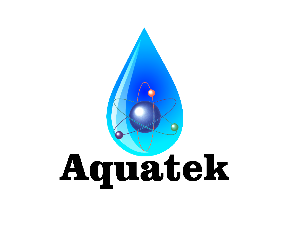Glossary of water terminology and definitions-s
Sacrificial Anode
An
anode constructed of magnesium or other suitable material and placed in
a water heater tank to accept the electrolytic activity and to protect
the tank from corrosion.
Sand Filter
A
treatment device or structure for removing solid or colloidal material
of a type that cannot be removed by sedimentation. Such filters can be
gravity rapid-rate or enclosed pressure type.
Salt
The
common name for the specific chemical compound sodium chloride (NaCl),
used in the regeneration of ion exchange water softeners. In chemistry,
the term is applied to a class of chemical compounds which can be formed
by the neutralization of an acid with a base.
Saturated Solution
A solution containing the maximum amount of the dissolved substance that such a solution can hold at this temperature.
Scavenger
A polymer matrix or ion exchanger used to remove organics from feedwater prior to a deionization process.
Secondary treatment
The
second step in treating wastewater to remove suspended and dissolved
solids and biochemical oxygen (BOD) after the initial primary treatment.
Selective Ion Exchange
The use of a selective ion exchange medium with the property of removing specific ions from a solution.
Sequester
A
chemical reaction in which certain ions are bound into a stable, water
soluble compound, thus preventing undesirable action by the ions. For
example, polyphosphates can sequester hardness and prevent reactions
with soap.
Service Run
That
portion of the operating cycle of a water conditioning unit during
which treated water is being delivered, as opposed to the period when
the unit is being backwashed, recharged or regenerated.
Siliceous Gel Zeolite
A synthetic, inorganic exchanger produced by the aqueous reaction of alkali with aluminum salts.
Soda Ash
The
common name for sodium carbonate, a chemical compound used as an
alkaline builder in some soap and detergent formulations, to neutralize
acid water, and in the lime- soda ash water treatment process.
Sodium Hydrosulfite
A
strong reducing agent used as the main ingredient of several resin
cleaners used to clean iron fouled in ion exchange resin beds.
Softened Water
Any water that is treated to reduce hardness minerals to 1.0 GPG (17.1 mg/L) or less, expressed as calcium carbonate.
Solvent
The liquid, such as water, in which other materials (solutes) are dissolved.
Sulfur
A
yellowish solid chemical element. The term is also used as a slang
expression to refer to water containing hydrogen sulfide gas (H2S).
Swelling
The
expansion of an ion exchange bed which occurs when the reactive groups
on the resin are converted from one form to another. This property is
reversible and indeed, some resins shrink in the exhausted state.
